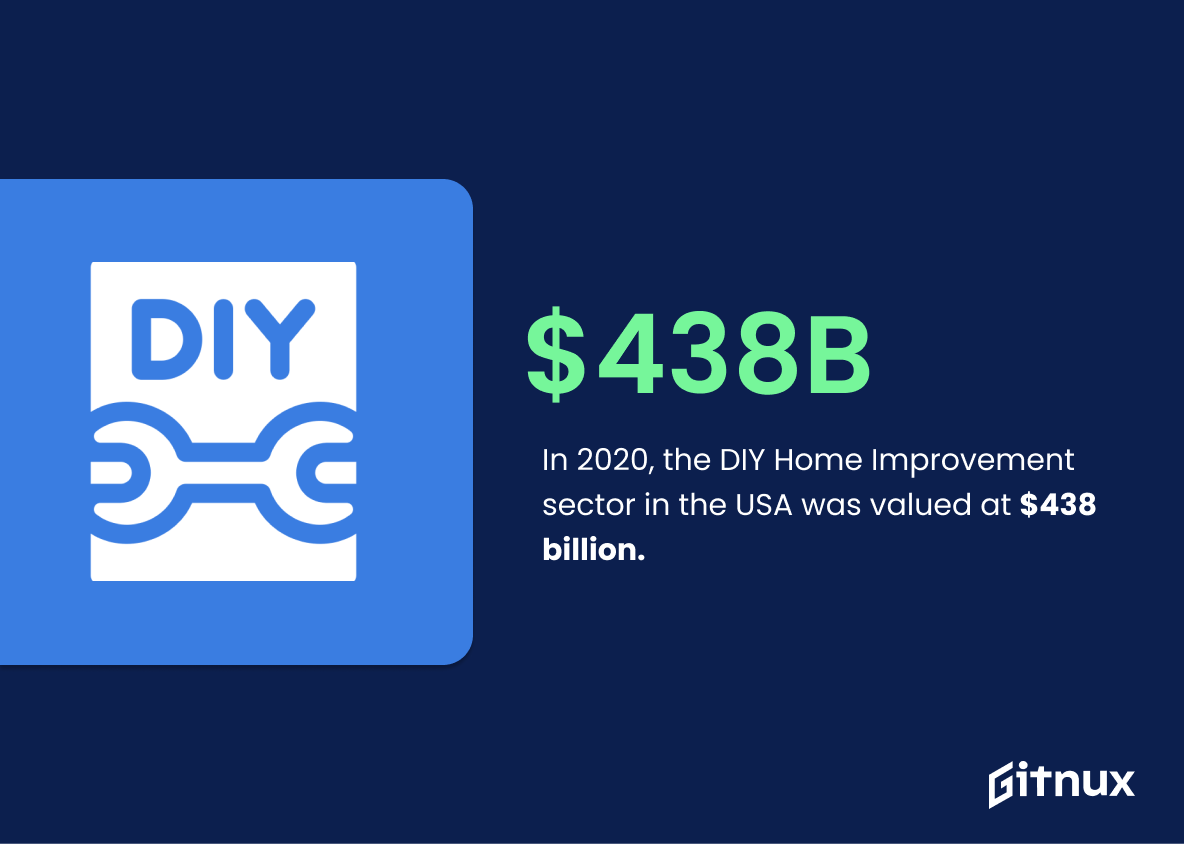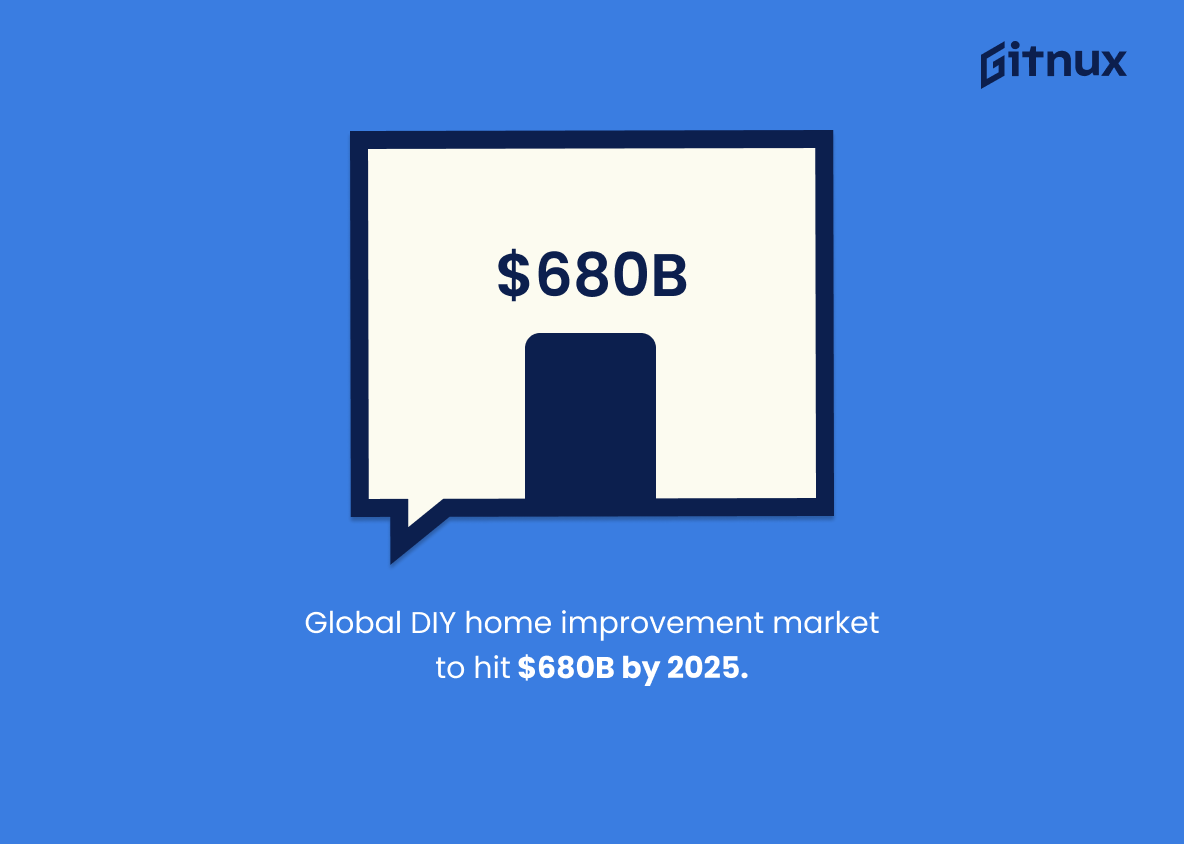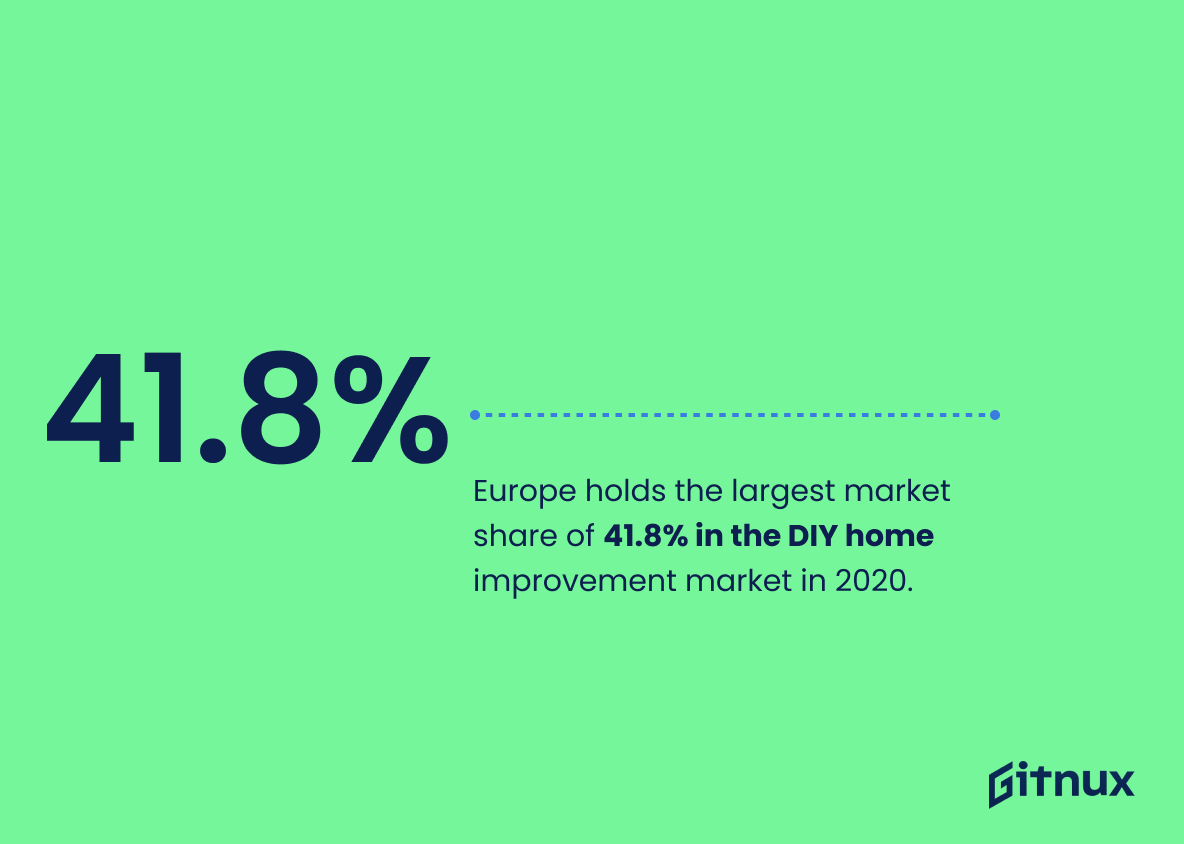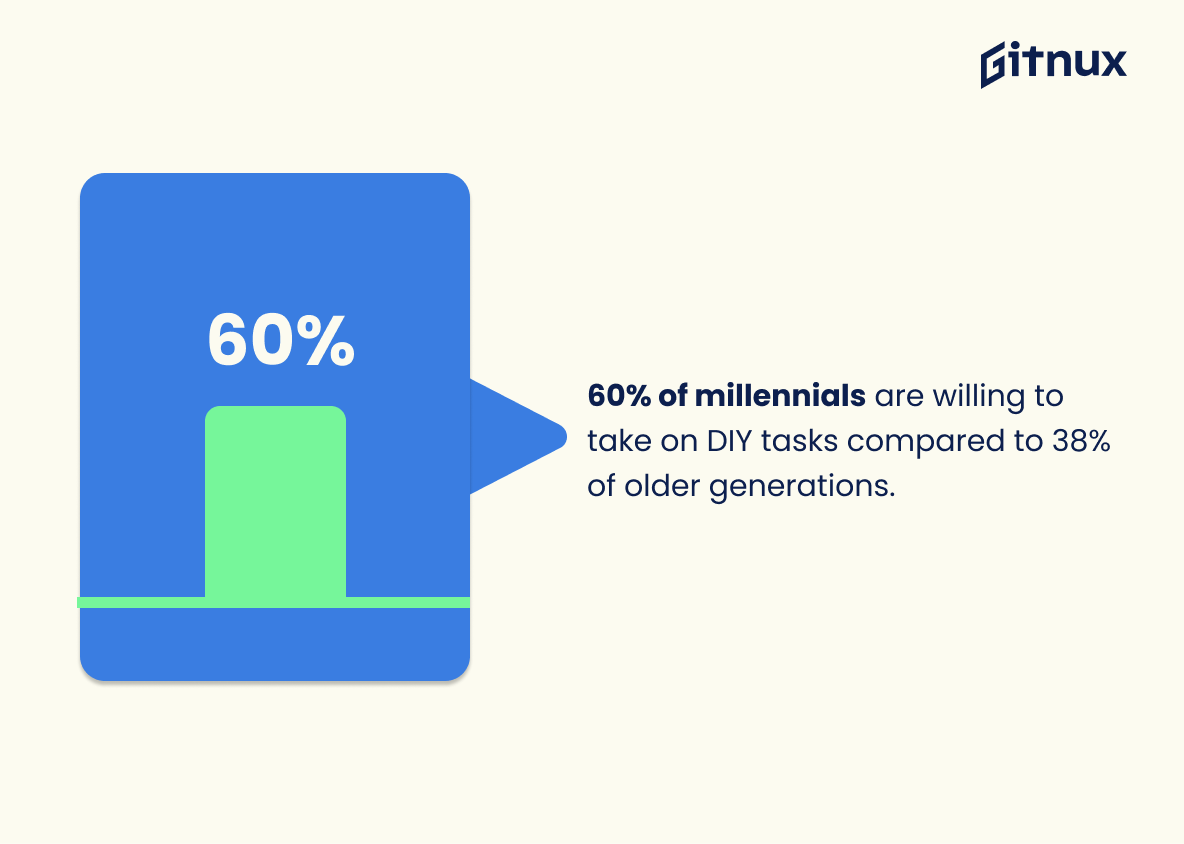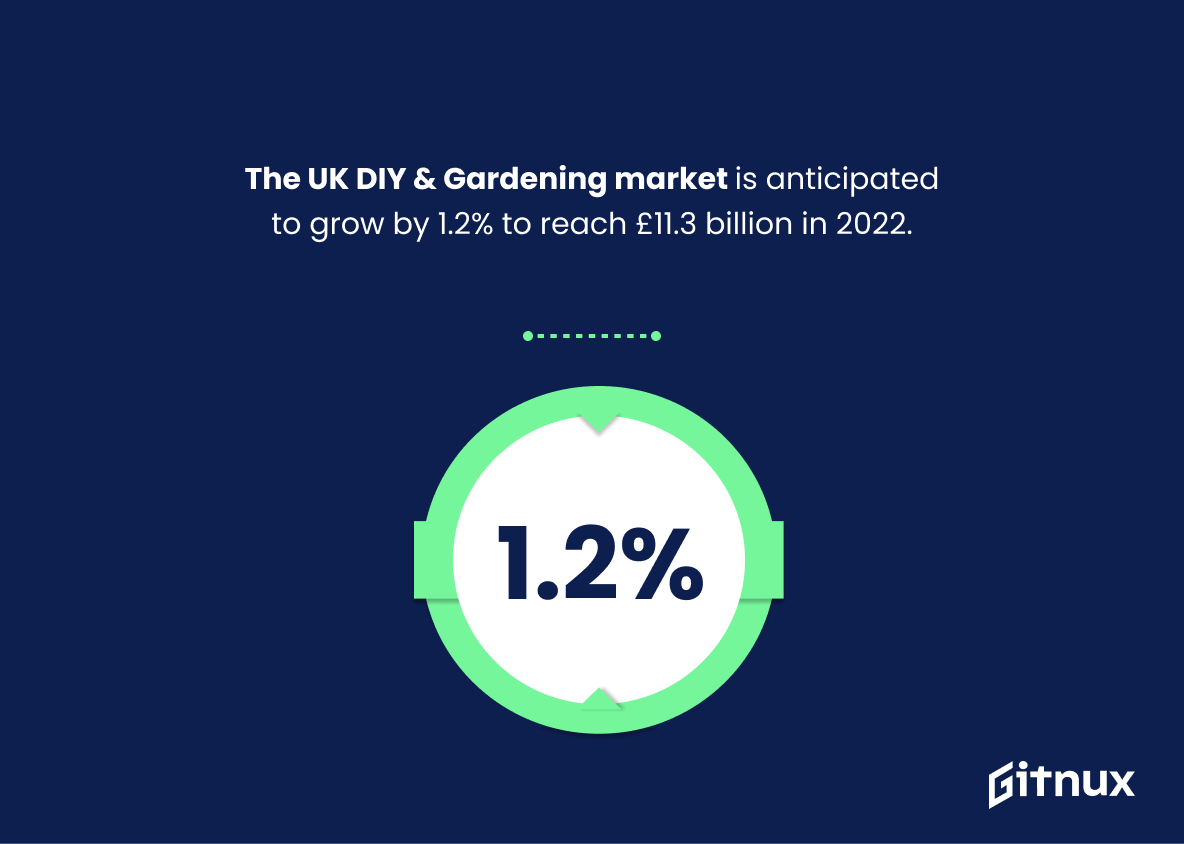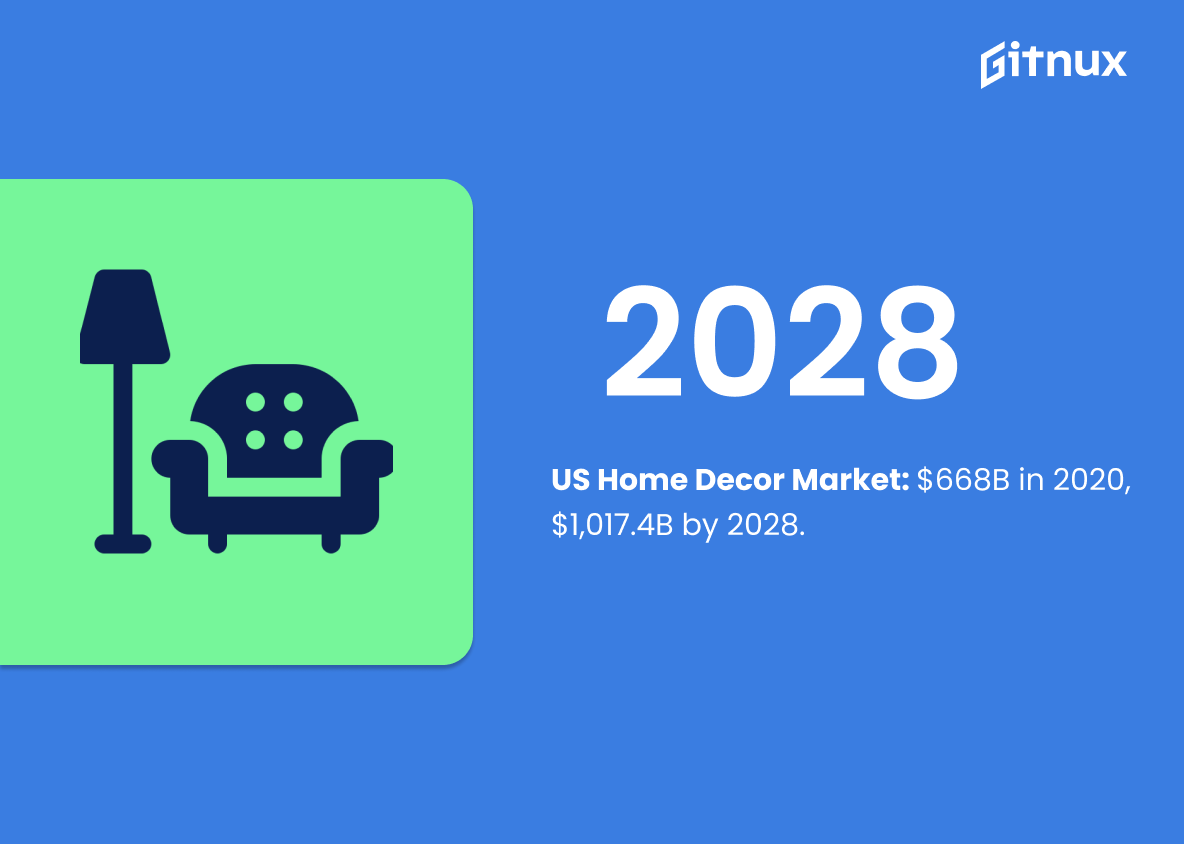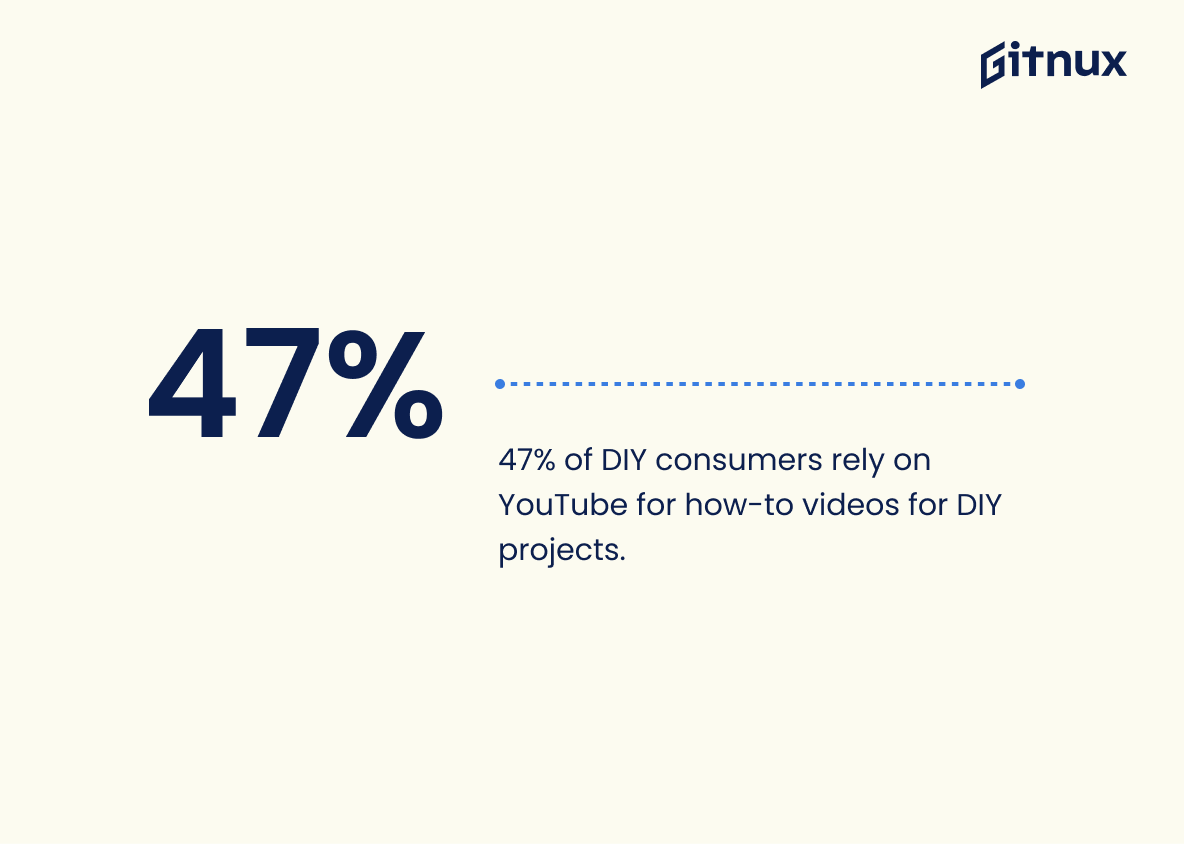In this ever-changing digital era, the growth of the DIY (do-it-yourself) industry has been nothing short of impressive. Whether it’s home improvement projects, arts and crafts, or even tech repair, the DIY vibe is catching on fast, forging a substantial sphere in the global market. The DIY industry statistics reveal a clarion trend; more people are drifting towards self-reliance, creativity, and the satisfaction acquired from a project’s completion. Harnessing the power of the internet for guidance, the eagerness to ‘do-it-yourself’ is expanding at a phenomenal pace. This blog post peels back the layers of the DIY industry, exploring its abundant worth and the rising statistics that define its meteoric progression.
The Latest Diy Industry Statistics Unveiled
In 2020, the DIY Home Improvement sector in the USA was valued at $438 billion.
This invigorating statistic serves a testimony to the commanding value of the DIY Home Improvement sector in USA. A staggering valuation of $438 billion in 2020 truly resonates with the trend that more homeowners are turning towards DIY projects, sparking a colossal demand in the industry. Immerse into this numeric revelation, and imagine it as a dynamic, booming heartbeat of the DIY sector. This impressive sum reflects not only market growth, but also the changing homeowner behaviors, lifestyle trends, and the drive to enhance living spaces with the personal touch. Highlighting this energizing figure paints a vibrant snapshot of the DIY industry’s colossal footprint and future potential, undoubtedly invigorating in any discourse about DIY Industry Statistics.
The global DIY home improvement retailing market size is projected to reach nearly $680 billion by 2025.
Taking into consideration the substantial growth prediction for the global DIY home improvement retailing market, with forecasts estimating the market size to touch a monumental $680 billion by 2025, it’s evident the DIY industry is becoming a titan in the retail sector. This prospective leap in market size is crucial and showcases an accelerating trend that should not go unnoticed by bloggers discussing DIY industry statistics. Not only does it underline the rising enthusiasm for DIY home projects, but it also highlights the potentially lucrative opportunities for businesses to tap into this booming market. Such a striking increase also raises questions about the influencing factors that are precursors to this growth. In this light, it’s impossible to talk about DIY industry statistics without focusing on this vital figure, as it sets the stage for an informed discussion about consumer behaviors, industry trends, technological advancements, and subsequent market dynamics.
Europe holds the largest market share of 41.8% in the DIY home improvement market in 2020.
Illuminating the landscape of the DIY industry, we uncover an intriguing detail. Europe, in 2020, held sway over a hefty 41.8% market share in the DIY home improvement market. Bearing witness to such an imposing figure, we can identify Europe as an indisputable powerhouse in the global DIY home improvement scene. It’s as if Europe is sitting at the head of a roundtable, setting the trends and dictating the course of the industry’s evolution. This formidable European market share further establishes the maturity and unflagging interest in DIY home improvement in this region, a robust influence that the other global players cannot afford to ignore.
In the context of our blog focusing on DIY Industry statistics, this information serves as a pivotal point of discussion, offering readers insights into regional disparities, market dominance, and consumer behaviors. But perhaps most importantly, it also prompts contemplation – allowing industry experts, DIY enthusiasts, manufacturers, and retailers alike to investigate the underlying factors giving Europe its sturdy advantage and they can leverage these insights to enhance the DIY industry’s growth and richness.
60% of millennials are willing to take on DIY tasks compared to 38% of older generations.
Tipping one’s hat to the change and dynamism that this statistic brings aboard, it paints a powerful picture of the prevailing trend in the Do-it-Yourself (DIY) industry. The 60% off the millennials willingly diving into the DIY tasks form a robust generation of self-doers and innovators, making them a significant player and target audience for companies in the DIY industry. As for the 38% of older generations showing an interest, let’s not undervalue their resilience and willingness to learn that can unleash new opportunities. This new age scenario reinforces the need for the DIY industry to tailor their strategies, products, and engagement activities, paying heed to the nuanced demands and skillsets of different age brackets. It also casts light on a potentially large, untapped market among older consumers that the DIY industry could pivot towards.
The UK DIY & Gardening market is anticipated to grow by 1.2% to reach £11.3 billion in 2022.
Unveiling the forecasted growth of the UK DIY & Gardening market bares testament to the vitality and resilience of this industry. An anticipated growth of 1.2%, inching the market closer to the mind-boggling £11.3 billion figure by 2022, illuminates the thriving trend of DIY and gardening practices. As we delve into this burgeoning world of self-reliance and hobbyist gardening, these statistics serve as a guiding star, highlighting the potential and prosperity in this sector. With these figures at hand, businesses, consumers and investors can re-evaluate strategies, focus their sights on the identified growth and mould their decisions to maximize returns. In essence, these numbers are not mere predictions, but rather levers influencing the industry’s strategic dynamics with swathes of opportunities beckoning entrepreneurs and enthusiasts. From a blogging perspective, these statistics weave a compelling narrative of growth, potential, and opportunity in the DIY & Gardening market.
The U.S. Home Decor Market size was worth $668 billion in 2020 and is predicted to reach over $1,017.4 billion by 2028.
Peeking into the future, where envisioning the essence of home is inextricably linked to personal space and design, the consistent growth trajectory of the U.S. Home Decor Market, blossoming from $668 billion in value in 2020 to an anticipated $1,017.4 billion by 2028, firmly underscores the flowering potential within the DIY industry.
This dramatic numeric portrait of growth injects vitality into the narrative of DIY industry, revealing a populace progressively enchanted by personalization and self-expression conveyed through their living spaces. A market that significant suggests a mounting interest in every facet of home decor, which naturally includes a DIY element. Herein, both seasoned hobbyists and rookies discover a platform where their creativity and passion for interior designs could translate into booming economic activity, and even rewrite the standards of home living altogether.
In essence, the story of the home decor market serves as an enabling backdrop, spotlighting the DIY industry’s outstanding performance and its bright future prospects as a leader of lifestyle change.
More than 53% of homeowners in the US have carried out a DIY project under the influence of social media in the past 2 years.
Highlighted by this datapoint, is an intriguing pattern of influence that social media has taken on within the realm of the DIY industry in the United States. Undeniably, it signifies that platforms such as Instagram, Pinterest, and YouTube have evolved beyond mere channels of communication and entertainment, emerging as instrumental driving forces behind a large percentage of DIY projects undertaken by American homeowners. Figuratively, it paints a picture of how over half the homeowners are not only turning to scrupulous ‘DIY’ internet searches for inspiration but also putting those inspirations into concrete action.
The DIY industry, as mirrored by these numbers, is no longer bound by the traditional ethos of paperback guides and hearsay knowledge. Instead, it is progressively being carved by the chisel of digital influence, stirring a tendency among American homeowners to indulge in do-it-yourself activities. In the grander scheme of the DIY industry’s evolution, the fact dictates a need for marketers and influencers to sharpen their online strategies, catering to the transforming mindset of consumers. Moreover, it also sheds light on the potential scope for introducing tailored products, tutorials, or even DIY kits that can cash in on this trending practice of social-media inspired DIYing. The ripple effects of such a trend, as hinted by the statistic, are profound and distinctly indicates social media’s rising clout in the DIY industry.
47% of DIY consumers rely on YouTube for how-to videos for DIY projects.
Highlighting that almost half the DIY consumer base depends on YouTube for guidance on projects illuminates a central pulse in the DIY industry dynamics. It underscores the pivotal role of video content in fueling the sector’s growth, paving the way to unlocking more strategies for businesses, influencers and marketers in this arena. In essence, this specific metric is revealing a shift in DIY culture from traditional methods to digital solutions, shaping the future of the do-it-yourself industry in profound ways.
Conclusion
The DIY industry has been expanding and experiencing significant growth in recent years. Most homeowners are now discovering the cost-effective, rewarding and fun aspect of the do-it-yourself approach. The advent of online tutorials, easy availability of tools, and rising home improvement trends has set the stage for consistent growth in the DIY market. Businesses who recognize these trends and leverage them will likely find themselves on a profitable path. As DIY becomes increasingly mainstream, we can only expect these industry statistics to rise even further. Stay tuned in to this space to keep an eye on the fascinating transformations in the world of DIY.
References
0. – https://www.www.businesswire.com
1. – https://www.www.fortunebusinessinsights.com
2. – https://www.www.grandviewresearch.com
3. – https://www.www.retailgazette.co.uk
4. – https://www.www.statista.com
